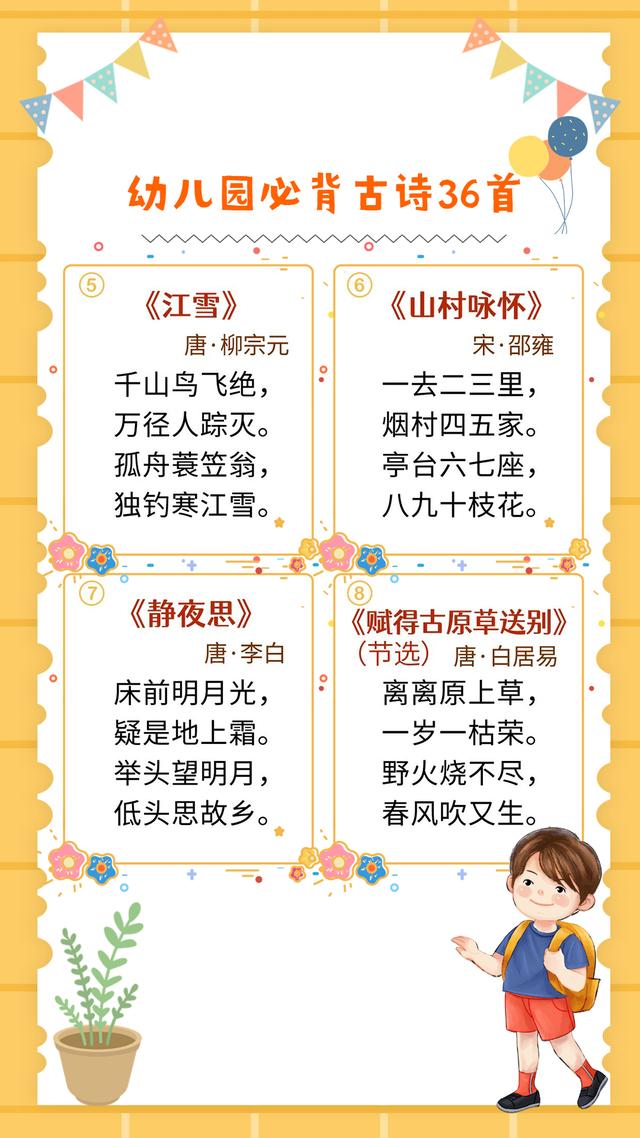五年级上册英语外研版教案及反思(外研版英语小学五年级上册教学设计)
课时备
|
课题:M1U1Did you come back yesterday? |
课型: 对话课 |
主备人: | ||
|
教学目标:
3.能讨论过去的生活日常,同学间增强了解和交流。 | ||||
|
教学重难点: 能听说认读写本课的词汇;能用动词过去式的一般疑问句询问过去的事情及用动词的过去式描述过去的事情。 | ||||
|
课前准备:点读软件 课本 练习本 | ||||
|
教 学 过 程 教 学 过 程 |
听后回答问题。Where did Lingling go?
Who did she meet? A.John B. Sam What did Lingling do? A. visited the London Eye
We know Lingling is in London with Sam and Amy. But I wonder did they come back yesterday? Back from 从哪回来 We’re home我们在家 came back-come back 回来 Chinese 中国的 near在附近
What do they do? A. buy ice cream B.play 学习ice cream those Let’s buy some .让我们买一些吧。 4.Read part2 in roles.读熟 5.Listen to part 3 and solve the question What happened to Lingling? A. Lingling dropped the ice cream B. they miss the bus 学习us我们come with us跟我们一起来 We’re going home now.我们马上要回家了 There’s our bus我们的公交车来了 Finish your ice cream.finish吃完 吃完你的冰激凌 Wait for me .wait 等,等等我。 Hurry up赶快dropped掉落,无意中掉落-drop
|
二次修改 | ||
|
当堂达标:
4.came back_________ 5.last Sunday_____
go_______ meet_________ see_______ visit_________ come______ drop_______
| ||||
|
板书设计: Module1Unit1 Did you come back yesterday? No, we came back last Sunday. | ||||
|
课堂生长点: 给学生搭建语言支架辅助他们复述课文
5)Wait for 6) dropped 7)Finish | ||||
课时备
|
课题:M1U2 We bought ice cream. |
课型: 阅读课 |
主备人: | ||
|
教学目标:
| ||||
|
教学重难点: 能用动词的过去式描述过去的事情。难点:没有使用动词过去式描述过去事情的意识;不知道动词的过去式怎么变化。 | ||||
|
课前准备:点读软件 课本 练习册 达标练习 | ||||
|
教 学 过 程 教 学 过 程 |
听跟读录音后,学生分角色练习。复习用Did…?句型询问过去发生的事情及回答。
听看视频,回答What did the letter say?这封信主要说了什么?
理解问题,然后让学生书写答案。并板书其中一个问题。
学习活动4字母或字母组合的发音。 Chinese/i:/ teacher/i:/ Listen/i/ give/i/ Tell/e/ then/e/ Cat/æ/ apple/æ/
例:We went to_______ last_______. We came back last_______. We went there by_______. We visited__________. |
二次修改 | ||
|
当堂达标:
went to the park__________ Come with us.___________ met John in the park_____________ Sam and Amy’s friend___________ bought ice cream______________ went home by bus_______________ ran to the bus______________ dropped my ice cream_______________ was________ We’re going home now.___________________
3.tell then ( ) 4.cat apple ( ) 三. Talk and write. We went to______ last_______(我们什么时间去了哪) We came back last_______(我们什么时间回来的) We went there by________ (我们乘什么交通工具去的) We visited (went to)_______(我们去参观了什么) 让学生看完,擦掉主要词汇,让学生凭记忆写。 | ||||
|
板书设计:Mu1U2 We bought ice cream. Did Lingling go to the park yesterday? Yes, she did. Did they go home by bike? No, they didn’t. | ||||
|
课堂生长点:
6)went home by 7) ran 8)dropped | ||||
课时备
|
课题:M2U1What did you buy? |
课型: 对话课 |
主备人: | ||
|
教学目标:1.能用“What do you buy? Did you buy…?”询问购买了什么。 2.能理解课文并流利地朗读或背诵课文。 | ||||
|
教学重难点: 能用一般过去时的特殊疑问句和一般疑问句询问过去的事情,并能用动词过去式描述过去发生的事情。 | ||||
|
课前准备:点读软件 课本 练习册 | ||||
|
教 学 过 程 教 学 过 程 |
Read or recite M1 words and texts. And say the sentence one by one.
1.Watch and answer. Ms Smart made a shopping list for their picnic. What do they need? Listen and answer. Ss: They need six bananas and four apples.
Ms Smart asks Mr Smart to buy 6 bananas and four apples. What did Mr Smart buy? He bought some apples , four pears and twelve eggs.
音标学习单词,教师示范,学生跟读。跟语音读。小老师领读。开火车读。等
need food 需要食物 for our picnic为了我们的野餐 make a shopping list做一份购物清单 I’ll make a shopping list.我将要做一份购物清单 first首先 Lingling likes apples. Likes喜欢,用的是三单。 can buy 能购买 lost弄丢了原形lose 形容词迷路的如My name is Doudou. I am lost. Lost the list把清单弄丢了。How many apples did your mum say? How many 多少 可数名词复数,如how many desks how many boys ,how many girls. How much cheese did she say? How much 不可数名词 ,如how much water,how much juice, how much rice等。 Buy-bought 哪些句子说明did 和didn’t后面用动词原形? What did you buy? How many bananas did you buy? We didn’t buy any bananas. 理解了最后一部分,回答几个问题。
They bought some apples, four pears and twelve eggs.
Any一些,观察句子,any 和some 分别用于什么句型。 We didn’t buy any bananas. Did they buy any bananas? We bought some apples. Any用于否定句和疑问句,some用于肯定句
|
二次修改 | ||
|
当堂达标: 一翻译。
| ||||
|
板书设计: M2U1 What did you buy? I bought four pears. Did you buy any bananas? Yes, I bought six bananas. | ||||
|
课堂生长点:
Need 6 likes apples Can buy | ||||
课时备
|
课题:M2U2 How much cheese did you buy? |
课型:对话课 |
主持人: | ||
|
教学目标:
| ||||
|
教学重难点: 能运用本课一般过去时的特殊疑问句询问多少。 | ||||
|
课前准备:课本,点读软件 练习册 | ||||
|
教 学 过 程 教 学 过 程 |
1.复习上节课的单词和课文。 2.Listen and say. 了解故事情节,复习“Did 动原 ?” ,动词过去式ate-eat drank-drink 学生跟读练习,为学习活动2做铺垫。
Amy, Sam and Lingling had a picnic. How much juice /How much cheese/How much chocolate did they buy?
学习“two bottles of juice/ half a kilo of cheese/ half a kilo of chocolate,bought-buy” 学习“need/feed/meet ,need sth for sth,can do可以做什么 ,use使用,a lot of chocolate许多巧克力”
听录音跟读、小老师领读。
小组合作展示/开火车说句子
教师示范例子。How many bananas did you buy? I bought four bananas. How much meat did you buy? I bought 2 kilos( of meat). 带领学生归纳How many 可数名词复数 How much 不可数名词
引导学生关注number/mother, bananas/teacher, bird/nurse 发音,并跟读练习。 T:周末去超市购物,你和你的朋友相遇了,根据活动6和活动7谈论在超市购买了多少东西。
|
二次修改 | ||
|
当堂达标:
6.half a kilo___________7.a lot of chocolate________________ 8.can eat some_____________ 9.drank it all__________ 10.ate it all_____________ | ||||
|
板书设计: M2U2 How much juice They bought two bottles. cheese did you buy? Half a kilo. chocolate Half a kilo. How much 不可数名词 How many 可数名词 | ||||
|
课堂生长点: | ||||
课时备
|
课题:M3U1Where did you go? |
课型: 对话课 |
主备人: | ||
|
教学目标:
| ||||
|
教学重难点: 掌握本课的单词和用特殊疑问句的过去式询问过去的事情。 | ||||
|
课前准备:点读软件 课本 练习册 | ||||
|
教 学 过 程 教 学 过 程 |
学生听并跟唱歌谣,学习一般过去时的特殊疑问句 和Please tell me.句型
They visited lots of places. 2)Where did they go? They went to the British Museum and visited Big Ben and the London Eye.
They went by bus.
Yes,she did.
“at the weekend在周末,lots of places许多地方,visited-visit, went to the British Museum去了大英博物馆,went-go,visited-visit, visited Big Ben and the London Aye参观了大本钟和伦敦眼,went by bus乘公交车去,liked the bus ride best最喜欢乘公交车,took a boat trip along the river沿着河流乘船旅行,took us one hour and twenty minutes花费了一小时二十分钟,took-take乘交通工具,花费”
|
二次修改 | ||
|
当堂达标:
| ||||
|
板书设计: M3U1 What did you do at the weekend? We visited… Where did you go? We went to … How did you go to these places?We went… | ||||
|
课堂生长点:
| ||||
课时备
|
课题:M3U2 Daming took a photo of his father. |
课型: 阅读课 |
主备人: | ||
|
教学目标:
| ||||
|
教学重难点: 掌握本课的词汇和能用动词过去式描述过去的事情。 | ||||
|
课前准备:点读软件 课本 练习册 | ||||
|
教 学 过 程 教 学 过 程 |
学习一般过去时的特殊疑问句和过去时的一般疑问句,及took -take pictures拍照
学生看完视频后,自主阅读短文,完成活动3的阅读题。主要锻炼学生阅读理解能力和筛选关键信息的能力。
“went to the Great Wall去了长城, at the weekend在周末,went to Badaling去了八达岭,bu bus乘公交车,arrived-arrive there到那,at ten o’clock in the morning在早上10点钟,old and long既老又长,walked-walk on the wall for one hour在城墙上走了一小时,were-are是复数,lots of people许多人,took photos of the mountains给山拍了照,with beautiful flowers and green plants介宾修饰mountains长有美丽花朵和绿色植物的山,took a photo of his father给他爸爸拍了一张照片。 ”
跟语音读,小老师领读
T:Reading is very important. 读万卷书不如行万里路。看来行万里路同样很重要。行万里路即旅行。旅行能拓宽我们的视野,提高我们的认知。那你们能谈谈你们的旅行经历吗?仿照活动7说一说。
Arm/class, dog/box, morning/walk,book/football,soup/food 8.Homework. |
二次修改 | ||
|
当堂达标:
| ||||
|
板书设计: M3U2 1.Went to the Great Wall at 2.went to Badaling by 3.arrived at 10 in 4.Old and long 5.walked on the wall for 6.lots of people 7.took photos of with and 8.took a photo of | ||||
|
课堂生长点: 给学生搭建语言支架,要求学生做之前,自己先尝试一下
| ||||
课时备
|
课题:M4U1 Mum bought a new T-shirt for me. |
课型:对话课 |
主备人: | ||
|
教学目标:
| ||||
|
教学重难点: 能掌握本课的重点词汇,并能用动词的过去式描述过去的事情及用“Did… ?”询问过去的事情。 | ||||
|
课前准备:课本 练习册 点读软件 | ||||
|
教 学 过 程 教 学 过 程 |
复习“Do…?”句型及“want, bought…for…”的用法,并学习“pair,shorts”
What’s the matter with Sam and Amy? 有难度,可以让学生用汉语说一说。
1)“Don’t argue!”argue争论,争吵,领读并书空。 “matter问题,麻烦What’s the matter?”领读,翻译,重复,接龙说。 “Sam took my T-shirt.took拿走,取走take的过去式”领读,翻译,重复,接龙 “He wants to wear it. Want to do想做某事,to后用动词原形,he三单,wants三单”同样方式学习此句。“want sth, I don’t want shorts.我不想要短裤。” 领读,翻译“But it isn’t your T-shirt.” “Mum bought it for me.buy sth for sb为某人买东西”领读,翻译,重复,接龙说。 “No, she didn’t . No, she didn’t buy it for you.” “Mum bought a new T-shirt for me.”重复,接龙说。 跟录音读 分角色读,并展示
“I washed them for you. for为了”同理理解,重复,接龙说。 “Did you wash Lingling’s T-shirt?No, I didn’t.”一分钟对话练习 “Lingling’s T-shirt is clean.She didn’t wear it.”理解,重复,接龙说或个人说。 “That’s OK. 没关系”重复两遍。 “The cat is so cute. 如此可爱; Let’s go and fly it.”理解,重复。 分角色对话练习,四个角色。展示。
4.根据导图复述。 |
二次修改 | ||
|
当堂达标: 翻译
9.That’s OK._______ 10.Let’s go and fly it._________ | ||||
|
板书设计: M4U1 Mum bought a new T-shirt for me. 随堂生成 导图 | ||||
|
课堂生长点: 好的英语课堂要能调动起学生情绪情感的参与,这样比被动,无感情的参与要效果好得多,所以教师要调动听觉 视觉 嗅觉 触觉 动作 语言 表情等多种感官和身体语言的参与,让学生参与到课堂学习中来。
| ||||
课时备
|
课题:M4U2 What’s the matter with Daming? |
课型:对话课 |
主备人: | ||
|
教学目标:
| ||||
|
教学重难点: 能理解并复述本课的课文。能用“What’s the matter with sb?和动词过去式的句子”做事情。 | ||||
|
课前准备: 点读软件 课本 | ||||
|
教 学 过 程 教 学 过 程 |
看视频,了解Ben怎么了?理解,会读就可。
Daming lost his bag.
学习“What’s the matter with Daming?”翻译,接龙说 “He lost his bag. lost丢失”接龙说。 分角色对话练习。 “I found this bag on the school bus. Found原形find,发现”翻译,领读,接龙说。 “These new sports shoes were in it.”“And those are my shoes. those那些”翻译,领读,接龙说。 分角色对话练习。
|
二次修改 | ||
|
当堂达标: 翻译
3.found this bag on the school bus_______ 课本24页第3题。注意her 和his的区别并讲解。 | ||||
|
板书设计: M4U2 What ‘s the matter with Daming? He lost his bag.---I found this bag on the school bus.---These new sports shoes were in it. These-those his--her | ||||
|
课堂生长点:
| ||||
课时备
|
课题:M5U1There are only nineteen crayons. |
课型: 对话课 |
主备人: | ||
|
教学目标:
| ||||
|
教学重难点: 能掌握本课数量的词汇及能用“There be”做事情。 | ||||
|
课前准备: 点读软件 课本 练习册 | ||||
|
教 学 过 程 教 学 过 程 |
学说chant,学习数量的词汇15 和20.
What happens in class?
Class begins.领读,理解,接龙说。上课,怎么说? Please give out the crayons. Give out 分发,crayons蜡笔,领读,理解,接龙说。请把蜡笔分发下去。 复习“one-twelve”,学习“thirteen,fourteen,fifteen,sixteen, seventeen,eighteen,nineteen”引导学生观察这些词都含有“teen”领读,指读,接龙说13-19怎么说? “There are only nineteen crayons.”领读“there are这有,only仅仅,nineteen crayons19支蜡笔” 领读,这有19支蜡笔怎么说? “But there are twenty children in the class.”领读,但是班里有20名孩子怎么说? Ms Smart 和Sam分角色对话练习。 “I bought twenty yesterday.”同样领读,接龙说昨天我买了20支怎么说? “Did I lose one?”同样方式处理。 “No, you didn’t. ”“There’s one on the floor.floor地板”在地板上这有一支。强调“There ‘s one=there is one”接龙说。让学生意识到There are 复数,there is 单数。 There _______nineteen boys in the class. There_____one girl in the class. “there are twenty-one crayons.”理解,领读,接龙说。这有21支蜡笔怎么说? 22怎么说?Twenty-two,23twenty-three,24twenty-four Ma Smart,Amy Sam分角色练习。展示。集体或个人展示。
Homework
|
二次修改 | ||
|
当堂达标: 汉译英
8.这有21支蜡笔_______ | ||||
|
板书设计: M5U1 There are only nineteen crayons. 13-20几个数字及它们的英文单词 导图 | ||||
|
课堂生长点:
| ||||
课时备
|
课题:M5U2 There are forty. |
课型: 对话课 |
主备人: | ||
|
教学目标: 1.学习20-90整十数字的表达及用“How many… are there…?及There are…”询问这里有多少人或物和描述这有多少人和物。 2.能理解并流利地朗读或根据导图复述课文。 3.讨论家庭成员,并增强关爱。 | ||||
|
教学重难点: 能听说认读写本课的单词及能用重点句型做事情。 | ||||
|
课前准备: 点读软件 课本 作业本 练习册 | ||||
|
教 学 过 程 教 学 过 程 |
通过chant学习20-90整十的英文表达。
1.Watch and answer. 了解对话内容。
“How many pupils are there in your class?”领读,理解,接龙说。 同理学习“There are fourteen. There are forty. There are so many.”领读,理解,接龙说。So many如此多。 自读,互查。
语音。 T: Make a survey of families. How many people are there in your families? S: There are T: Who are they? S: They are T: Do you love your mum or dad or family? S: T: Why? S: 4.练习册听力。 Homework 1.课文背诵。 2.练习册笔试。 |
二次修改 | ||
|
当堂达标:
3.这有40名________ 4.这有如此多__________ | ||||
|
板书设计: M5U2 How many pupils are there in your class? There are fourteen. There are forty. | ||||
|
课堂生长点: How many pupils are there in your class? There are fourteen. There are forty. | ||||
课时备
|
课题:M6U1You can play football well. |
课型: 对话课 |
主备人: | ||
|
教学目标:
| ||||
|
教学重难点: 能掌握本课的单词听说写认读及用“can”做事情。 | ||||
|
课前准备: 点读软件 练习册 课本 | ||||
|
教 学 过 程 教 学 过 程 |
Listen and say.通过听说句子,学生感知“can”的用法。
玲玲什么运动项目做得好?
1)“Lingling, do you want to be in our football team?”领读,理解,接龙说。强调“do you want to be”想加入,玲玲,你想加入我们足球队吗?学习“team”球队 “But I don’t play well.”学习“well”熟练地。领读,理解,接龙说。但是我踢的不好,怎么说? 同桌两人角色扮演,一个Amy,一个Lingling. 展示说,个别或接龙 “Can you run fast?”run fast跑得快,你能跑得快吗?一起重复两遍。两人问答练习。 “Can you pass the ball well?”pass the ball传球well熟练地,你能熟练地传球吗?重复两遍英文。接龙说。 “Not very well.”不是非常好。 两人问答练习。 四人一组,角色扮演练习。 2)“But you can jump really high.”really很,非常。 But you can-jump really high 领读,你可以跳得非常高怎么说?重复两遍,接龙说。 “You’re good at basketball.”good at 擅长 领读,理解,你擅长篮球怎么说,接龙。 角色扮演Amy和Lingling对话练习。 “And you can catch the ball well.”catch抓住,接住,catch the ball well.很熟练地接住球。并且你能很好地接住球,怎么说?重复两遍,自己练习10遍,接龙说。 扮演Sam 和Lingling 对话练习。 “So you can be a good goalkeeper.”goalkeeper守门员goal球--keep保持--er人。领读,你会是一位优秀的守门员怎么说,重复两遍,自己说10遍,接龙说。 “I think I can do that well.”听音跟读两遍,think,think想,认为,我认为我可以把守门员的工作做好怎么说?两遍,接龙。 扮演Sam和Lingling 对话练习。
“I’m your first fan.”听音跟读两遍,学习fan,fan迷,I’m your first fan. First第一个的,我是你的第一个球迷怎么说? “You can play football well.” 听音跟读,你踢球踢得很好。 三人分角色扮演朗读。
S: I can/can’t .让学生了解自身的优势和劣势。优势寻求机会发挥,劣势弥补。 |
二次修改 | ||
|
当堂达标: 汉译英
3.can jump really high_______4.good at______5.can catch the ball well_______6.can be a good goalkeeper________ | ||||
|
板书设计: 新授单词一列 You can be a good goalkeeper. You can play football well. | ||||
|
课堂生长点:
| ||||
课时备
|
课题:M6U2He ran very fast. |
课型:对话课 |
主备人: | ||
|
教学目标:
| ||||
|
教学重难点: 能听说写并认读本课单词和用动词过去式做事情。 | ||||
|
课前准备: 点读软件 课本 练习册 | ||||
|
教 学 过 程 教 学 过 程 |
Watch and answer. 两个动物都擅长什么运动? “The black horse ran really fast.” horse 同house区分 ran-ran跑,拼读,原形run,ran really fast跑得快。 Played basketball really well,打篮球非常好。
课文基本内容 2.Learn the text. “Amy’s grandpa”艾米的奶奶领读。 “In the past, he ran very fast.”past过去,in the past在过去。听音跟读整句话,重复两句,理解。在过去,他跑得非常快怎么说? “He jumped high and swam very fast.”jumped high跳得高,拼读jumped , swam very fast,游得快,拼读swam。听音跟读整句话,重复两句,理解。他跳得高,游得快。怎么说? “He’s slow now, but healthy!”slow慢的,领读,拼读;healthy健康的,领读,拼读。听音跟读,两遍,重复两遍。接龙说。
|
二次修改 | ||
|
当堂达标: 汉译英
3.他是慢地,但是健康的______ | ||||
|
板书设计: 生词一列 句子随堂生成。 | ||||
|
课堂生长点:
课堂流程:第一课时解决单词和课文句子音和义的问题。第二课时看导图复述,能够根据翻译写出正确的句子,能听写单词。第3课时做听力和笔试练习。 | ||||
课时备
|
课题:M7U1He can’t see. |
课型: 对话课 |
主备人: | ||
|
教学目标:
| ||||
|
教学重难点: 能掌握本课的单词和句子,能用“can or can’t”做事情。 | ||||
|
课前准备:练习纸 课本 点读软件 练习册听力 | ||||
|
教 学 过 程 教 学 过 程 |
Watch and chant. 观看有关狗的视频,了解狗能做的事情,并会唱出来。
T: What’s the TV show about? 学习show SS: T: Do you like dogs? SS: Yes, I do. I like dogs. T: Why do you like dogs? T SS: Because dogs are useful. 学习useful. T: Why do you think dogs are useful? 阅读39页,让学生画出答案。SS: …学习blind,1分钟练习3句话。学生看到图展示。 学习deaf, ear-hear , her
“There ‘s a TV show about dogs.”show 节目,TV show电视节目,领读。About关于,这有一个关于狗的节目,how to say? “Dogs are very useful.”use使用-useful 有用的 领读,狗是有用的怎么说? 同桌两人对话练习。 “This man is blind.” b-lind kind find失明的,瞎的。L领读。这个男人是失明的,how to say? “He can’t see.”他看不见,怎样说?“This dog helps him.”领读,接龙说句子。 “This girl is deaf.”领读deaf,这个女孩是聋的,怎么说?接龙说句子。 “She can’t hear.”hear听见, ear-hear, 接龙说。 “This dog helps her.”her宾格她,当作宾格时放在动词和介词后面;当形容词讲时是她的,放在名词前面。 Listen and answer. Last week , there was_________. This dog helped the __________. 学习fire right -fight fighter firefighters 领读,指名说,齐说 T: When there was a fire, we can call 119. 领读句子,学生跟读,自读,看导图复述 T:Dogs are very useful. I want a dog. Do you want a dog? Sam, Amy and Lingling want a dog too. Can they have a dog? Listen and answer. No, they can’t. What can they have? Read this part. S:They can have hot dogs. What are hot dogs? They are sausages and bread. 学习sausages and bread. 学生跟读练习。3人分角色练习。并展示。
个人展示。加分。 4.活动4,看图说话,说给对方听。然后将三幅图的句子写在纸上。 |
二次修改 | ||
|
当堂达标: 练习册M7U1听力 | ||||
|
板书设计:
| ||||
|
课堂生长点:
| ||||
课时备
|
课题:M7U2This little girl can’t walk. |
课型:阅读课 |
主备人: | ||
|
教学目标:
| ||||
|
教学重难点: 掌握本课的词汇kind,能够用can’t做事情。 | ||||
|
课前准备: 课本 练习本 练习册 | ||||
|
教 学 过 程 |
Look the picture and say ,then listen and imitate. Pay attention to helped and help.
5.Do listening exercises.(练习册) |
二次修改 | ||
|
当堂达标: 完成活动2口头表述和活动3写的练习。能用“can’t”做事情。 | ||||
|
板书设计: T: Talk about can/can’t animals do? S: Tigers /Birds/ Horses can / They can’t . | ||||
|
课堂生长点: 生词量少时,直接让学生看图说句子。教师少讲。 | ||||
课时备
|
课题:M8U1What time does your school start? |
课型:对话课 |
主备人: | ||
|
教学目标:
| ||||
|
教学重难点: 能掌握本课的单词和能运用“what time”谈论时间。 | ||||
|
课前准备: 课本 练习本 点读软件 练习册 | ||||
|
教 学 过 程 教 学 过 程 |
一Warming-up Listen and chant. 通过一首chant了解时间,并学习词汇与语言。 先听,后跟读,再齐chant 二Presentation
Look at this picture. This is Amy and lingling. Look at the window.It’s night. 引导学生说night. What day is it today? It’s Sunday. 引导学生说sunday. What do they talk about? 引导学生回答
What time does Amy’s school start?接龙说句子My school starts at nine o’clock in the morning. What time does Amy get up? 学习半点的表达方式half past 数字。接龙说句子。 Does Amy walk to school? Listen and say. Read in roles. 给此段视频配音 46页活动4学生问答练习 ,练习整点和半点的表达方式。 A: What time is it? B: I get up at… 汇报人:He/She gets up…
Does Amy do exercise every morning? What do they do? 通过问题引导,帮助学生理解对话内容,并学习新词汇。 Listen and say. Read in roles.
Look at picture4 and answer. What day is it today? 引导学生回答It’s Monday. 并学习新词汇coffee tea. Listen and say. Read in roles.
并用英文表达出来。小组内分享。教师抽测。 |
二次修改 | ||
|
当堂达标: 本课课文理解并读熟,看图复述前两幅图片,剩下的两部分读熟即可。 活动4练习题能熟练问答,并写出我在某个时间做什么事情。然后让学生写出he做主语时的句子。 | ||||
|
板书设计: T: 你的日常惯例表/时间表是怎样的?你能画出来,运用英语告诉你的同学吗? I at
| ||||
|
课堂生长点: 让学生能用行为动词的一般现在时和时间做事情,并建立良好的时间观念。 把歌曲教学可以作为与学生沟通的一个媒介。 | ||||
课时备
|
课题:M8U2Yesterday I went to Sam and Amy’s school. |
课型: 阅读课 |
主备人: | ||
|
教学目标:
| ||||
|
教学重难点: 掌握本课的词汇并复习用行为动词的一般现在时和动词的过去式描述过去的事情。 | ||||
|
课前准备: 点读软件 课本 作业本 | ||||
|
教 学 过 程 教 学 过 程 |
Listen and chant. 先听,再跟读,自读,再一起唱。复习行为动词一般现在时的句型。学习always
先让学生读问题UK 英国 ,然后学生带着问题,听音读信,写出答案。学生回答不上来,先学习文本,然后让他们回答。教师可以把答案写在点读软件上。
介绍信的格式,右上角写的是地址由小到大。首行写的是写给谁,中间正文,末尾署名。 因为是昨天发生的事,所以用过去式。学习“Yesterday I went to Sam and Amy’s school.”说意思,让学生重复,拼读went 以同样的方式说意思,让学生练习说句子,或自读10遍,In the UK they don’t start school at eight o’clock. They start at nine o’clock. They don’t do morning exercise here. They all play in the playground. I skipped with the girls.学习skipped. 学习“bell rang--ring”.The bell rang at nine o’clock.领读,说意思,让学生重复。学习“went into”
|
二次修改 | ||
|
当堂达标: 课文内容内容有理解,有思考的输入。复述全文。练习册听力练习。 | ||||
|
板书设计: 导图和关键词 | ||||
|
课堂生长点:
根据关键词和图示,复述全文。 went bell rang went into | ||||
课时备
|
课题:M9U1Are you feeling bored? |
课型: 对话课 |
主备人: | ||
|
教学目标:
| ||||
|
教学重难点: 掌握本课的重点词汇并能“Are you feeling…”做事情。 | ||||
|
课前准备: 点读软件 课本图片 练习册 作业本 | ||||
|
教 学 过 程 教 学 过 程 |
一Leading-in Look ,listen and say. 引导学生看图,理解狗情绪变化的原因,并听音跟读,自读和齐读。狗狗也希望他的主人关注。 二.Presentation 1.Listen and answer. What’s the matter with Lingling? S: Lingling is feeling sad. 听音跟读学习句子,和词汇feeling bored miss angry sad. What’s the matter? Are you feeling bored/angry/sad? Do you miss your friends in China?或让学生读10遍,需要重复接龙说。 然后教师可以用“Are you feeling ?”和学生进行互动。 总结Are you feeling ? Yes ,I am./No, I am not.板书。 学生自读,分角色朗读,并展示。 2.Listen, read and answer. Why is Lingling feeling sad? 提出问题后,引导学生看图。并提问Who is she?S: She is Lingling’s grandma. She is ill. T: So she is feeling sad. 过程中学习ill. 听音跟读。学习called=phoned told原tell, 小老师领读,学生自读,分角色展示。 3.Watch,read and answer. How is Amy’s grandma now? 学生带着问题看视频,回答问题。再次要求学生阅读第三部分,划出答案。回答。 S: She is better now. She went home this morning. 学习better. Listen and repeat. 小老师领读。学生自读,分角色读。配音。
Sad angry bored Method method method
|
二次修改 | ||
|
当堂达标: 能理解流利地朗读课文,看导图复述课文。 | ||||
|
板书设计: T:When we are feeling sad,angry or bored, how do we manage our feelings? S: eating /read a book/play with toys /play with friends/play with pets/ go to park/listen to music/ talk with friends/play the piano
| ||||
|
课堂生长点: 学生能够看图理解课文内容,能够理解并思考输入语言。此课可以设计。引导学生关注自己的情绪情感,学会正确的处理不良情绪。 | ||||
课时备
|
课题:M9U2 I feel happy. |
课型: 阅读课 |
主备人: | ||
|
教学目标:
3.能关注并管理自己的情绪或感受。 | ||||
|
教学重难点: 能掌握本课的词汇,并能运用所学语言描述原因,和描述自己的感受。 | ||||
|
课前准备: 点读软件 课本 练习册 | ||||
|
教 学 过 程 教 学 过 程 |
Look, listen and say. 看图能用He is 形容词.描述人物的情绪。听跟读,自己读,齐读。引导学生关注国粹-川剧变脸。并让学生欣赏视频。
1.Listen and say. 看图理解句子意思,学习新词汇farm tired 听音跟读,我说汉语,学生说英语,接龙说句子。一分钟读10遍句子。看图复述句子等方式巩固。以同样的方式学习won-win,ruler,smell等词汇。 2.Look and write. Then ask and answer. 示范学生。Does she feel happy? No, she doesn’t.How does she feel? She feels angry.注意三单。书写屏幕并让学生问答。
|
二次修改 | ||
|
当堂达标: 能根据时态看图描述某人的情绪情感。 完成本课的听力练习。 | ||||
|
板书设计: I feel tired Happy Sad hungry | ||||
|
课堂生长点: 学生能询问并表达自己的情绪。情绪不好时,能运用正确的方法管理情绪。 | ||||
课时备
|
课题:M10U1He was in the kitchen. |
课型:对话课 |
主备人: | ||
|
教学目标:
| ||||
|
教学重难点: 能运用本课的词汇,过去时态询问和描述人或物的位置。 | ||||
|
课前准备: 点读软件 课本 练习册 作业本 | ||||
|
教 学 过 程 教 学 过 程 |
一Leading-in Listen and chant. 看视频,理解内容。淘气的Tom分别藏在四个不同的地方,让Ms Smart, Amy, cat和Mr Smart找。逐句跟读,学习kitchen/toilet/living room等词汇。学生自读,齐读。
像往常一样Lingling Amy Sam Tom又玩起来捉迷藏的游戏。让我们来听一听,看一看,他们都藏哪了?
What games do they play? They play hide -and -seek. 学习hide-and -seek 在句子中学习词汇“Let’s play hide-and -seek”.
学习“Where is Sam? There he is. He’s in the bedroom.He’s=He was I’m the winner. You found me last. Found-find”听音跟读,教师说汉语,学生说英语。接龙说句子。或一句读10遍。Amy 和Sam分角色练习。 Q: Where is Sam? S: He was in the bedroom.
学习“I found John first.first首先He was in the kitchen. Where did you find Lingling? I found Lingling in the toilet! ”听音跟读,教师说汉语,学生说英语。接龙说句子。或一句读10遍。Amy 和Sam,其他3个人分角色练习。 Where is John? S: He was in the kitchen. Where did Amy find Lingling? S: She found Lingling in the toilet. 看黑板关键词复述课文 Play hide-and-seek Where Sam There is He bedroom Winner found last Found John first He kitchen Where find Lingling Found toilet 给以上几幅图配音。 刚才学的句子有用过去时的比如found was did 为什么? 有的用一般现在时比如Where is Sam?问的是现在。
学习故事句子“Is Tom playing with you? No, he isn’t. Well, where is he? I don’t know. He was in the living room.”听音跟读,教师说汉语,学生说英语。接龙说句子。或一句读10遍。Amy 和Sam,Ms Smart3个人分角色练习。 Where is Tom? S: He was in the living room.
同样的方式学习“He is hiding behind the sofa.学习hide躲藏hiding, sofa. I found Ton last. He won the game.won-win赢得比赛。” Q: Where is Tom? S: He is hiding behind the sofa. 分角色朗读,并看板书复述。 关键词 Is Tom playing No Where he I don’t He was living room He hiding sofa Found last Won game.
运用“Where did you find ? I found 询问物品并描述物品的位置。”教师先示范,然后学生练习,再展示。 |
二次修改 | ||
|
当堂达标: 掌握本课单词的发音,课文故事内容,流利地读课文。看板书复述课文。完成听力练习。 | ||||
|
板书设计: Sam was in the bedroom John was in the kitchen. Lingling was in the toilet. Tom was in the living room. | ||||
|
课堂生长点: 能根据关键词汇将课文串起来。生活中,通过与家人游戏增强生活的趣味。 | ||||
课时备
|
课题:M10U2 Don’t shout,please! |
课型: 对话课 |
主备人: | ||
|
教学目标:
2.学习词汇“shout,baby.dangerous, grass”等词汇,并理解流利地朗读课文或根据关键词复述课文。 3.学会遵守公共场合的规则。做一名遵守规则的好孩子。 | ||||
|
教学重难点: 能掌握本课的词汇和运用“Don’t ! ”制定规则。 | ||||
|
课前准备: 点读软件 课本 练习册 | ||||
|
教 学 过 程 教 学 过 程 |
Listen and chant! 看视频了解故事内容,听音跟读,自读,一起说唱。
T: 在公园里不能做什么事情。
学习“Don’t shout,please! My baby is sleeping. Sorry,. I didn’t know. 学习shout baby”听音跟读,教师说汉语,学生说英语。接龙说句子。或一句读10遍。Lady和Amy分角色对话。
以同样的方式,学习“Don’t climb the tree. It’s dangerous. Sorry,Mum. 学习dangerous.”
学习“Don’t walk on the grass, Amy! Sorry. Let’s go and see the pandas,Sam. Great! Let’s go!”听音跟读,教师说汉语,学生说英语。接龙说句子。或一句读10遍。Ms Smart, Sam和Amy分角色对话。 T: In the park, What shouldn’t we do?不能做哪些事情? Don’t shout,please./ Don’t climb the tree!/ Don’t walk on the grass!
让学生说,然后写一写,教师在屏幕上写,核对答案。
You can do your homework in class. Don’t eat in class. Don’t play in class. Don’t stand on the chair. Don’t drink in class. You can sing songs in music class. You can draw pictures in art class. You can play football in PE class. You can work hard in class.
让学生来说,教师板书,书写本班的班规,并形成规定,大家一起遵守。 10.Listen and say, then chant. 通过歌曲巩固“Don’t ”,建立规则意识。 |
二次修改 | ||
|
当堂达标: 完成本课单词和重点“Don’t ”的运用,并完成本课相关的练习。 | ||||
|
板书设计: Shout Baby sleeping didn’t Climb Dangerous sorry Walk grass Sorry Go see pandas Great go | ||||
|
课堂生长点: 通过本课的学习,帮助学生建立规则意识。遵守本班的班规,等公共场合的规定。 | ||||
免责声明:本文仅代表文章作者的个人观点,与本站无关。其原创性、真实性以及文中陈述文字和内容未经本站证实,对本文以及其中全部或者部分内容文字的真实性、完整性和原创性本站不作任何保证或承诺,请读者仅作参考,并自行核实相关内容。文章投诉邮箱:anhduc.ph@yahoo.com





















